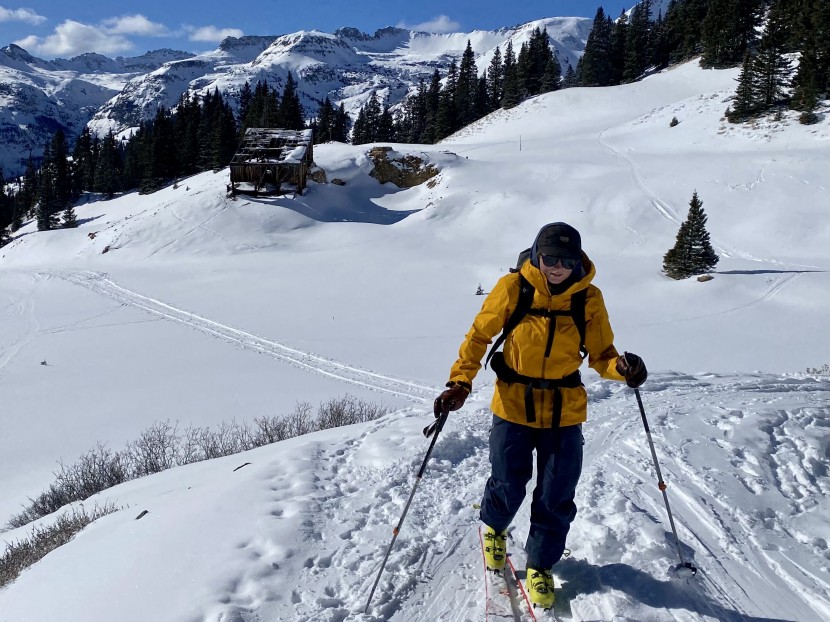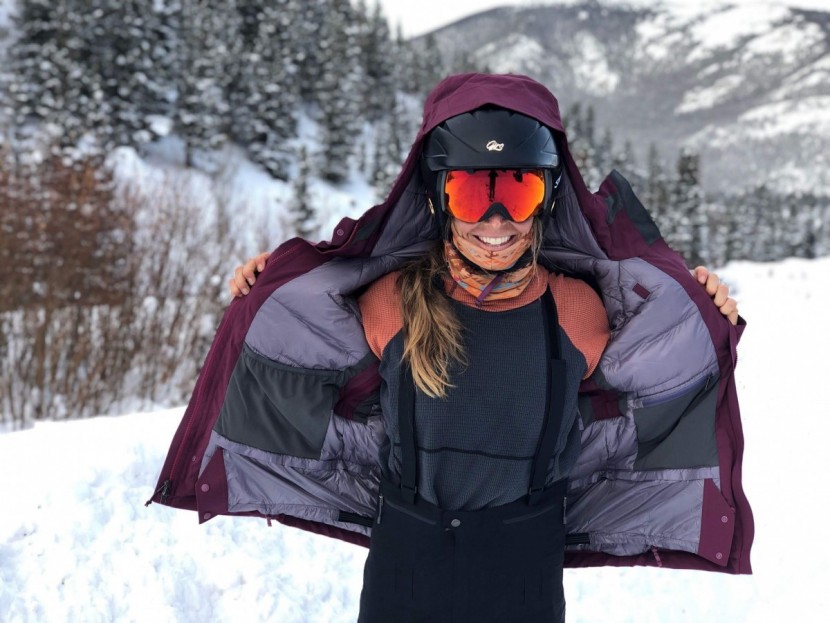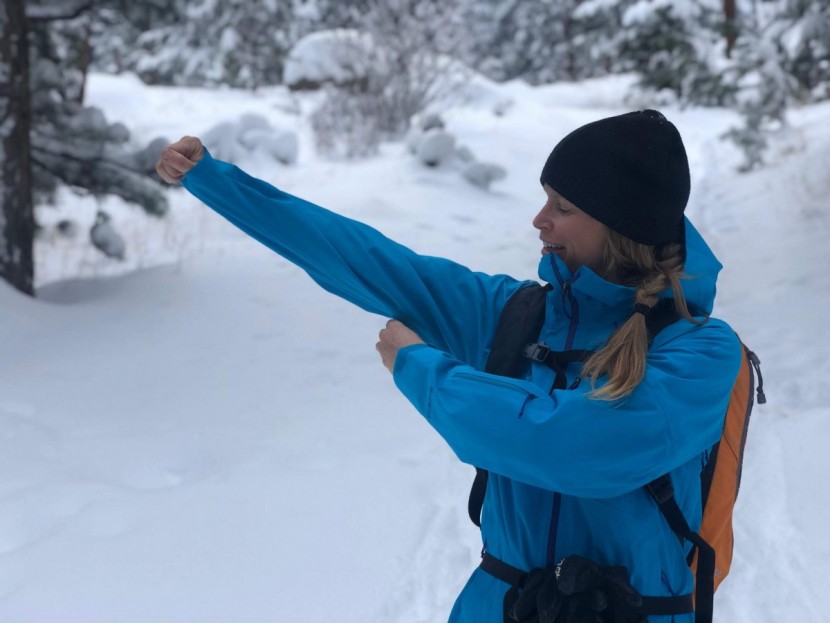Finding your favorite new ski jacket requires critical considerations. How often will you be wearing it? Where? What's the weather like? Do you think you'll ski at the resort or the backcountry more? How much money are you willing to spend? How important are color choices? It's almost like buying a car; we indeed take the decision seriously! A ski jacket's warmth and overall performance depend on various factors, including your climate and the materials, breathability, and fit. We discuss these factors and several others to consider to help you identify your needs accurately.
Climate
Where will you be skiing in your new jacket? Some things to ask yourself about weather include: How warm or cold is it? Is it wet or dry? Is your local area prone to wet, heavy storms (and even occasional rain), or is the snow powdery and dry? For very cold climates, you'll likely want a jacket with insulation and weather resistance. You should consider trying an uninsulated jacket in warmer environments. These jackets have plenty of room to layer underneath; conversely, the 3-in-1 type jackets have both an insulated and a hardshell layer, which gives you the option to bundle up, or on warmer days, leave the insulating layer behind.
Do you mostly ski somewhere where it tends to snow a lot (or maybe rain)? If you live or ski somewhere with a more maritime climate like Coastal British Columbia, the Northeast, or the Pacific Northwest, water-resistance should be a key consideration. Staying dry will be a key factor in your comfort. Consider waterproof/breathable material such as Gore-tex. If you live or ski in a more continental climate like Colorado or Utah, water resistance may not be as important as insulation with cool, dry storms.
Hardshells vs. Insulated Jackets
When choosing your ski jacket, you should consider its intended use. Hardshells are lighter weight, more versatile, and more technical jackets typically used for high-output activities such as Backcountry backcountry skiing and mountaineering. A hardshell is an outer layer that is waterproof, breathable, durable and has ventilation options. It is also typically much lighter than the average insulated ski jacket. Hardshell jackets meant for resort skiing (not the ultralight hardshells out there) often include some ski-specific features like powder skirts and goggle pockets but no insulation. This style gives you the ability to tailor your layers underneath to the weather outside, making the jacket more versatile for many weather conditions. Be sure to size your hardshell jacket appropriately with layering in mind. Hardshell jackets can be very expensive because they tend to incorporate higher-end membrane technologies.
Insulated ski jackets are made especially for keeping you warm while riding the lifts and going downhill. Companies have put a lot of thought into keeping you comfortable out there on the slopes and tailoring features specifically for this function. They include goggle pockets, pass pockets, media ports, double-cuffed sleeves, and powder skirts. These jackets (like many products in this review) come with some insulation, either down or synthetic, such as Primaloft, to keep you warm while sitting on the lift. Insulated jackets are heavier and bulkier than hardshells, which is acceptable since you're not carrying it around while hiking uphill as you would when backcountry ski touring.
Softshells should also be mentioned briefly in this section. They are made out of a stretchier, less waterproof material that tends to be more comfortable and significantly more breathable but is intended for dryer days of use. Softshells are usually heavier than a hardshell.
Down vs. Synthetic Insulation
If you're in a dryer, colder climate, down is number one for warmth. It has a higher warmth-to-weight ratio but loses its insulating power if it gets wet. Some jackets on the market use a combination of down and synthetic, placing the synthetic insulation strategically where it may get wet, like on the arms or shoulders.
Most ski jackets use synthetic insulation because it is slightly more versatile and less expensive than down. Synthetic insulation is tougher and will keep you warm if your jacket gets wet. It is, however, heavier and bulkier than down insulation, though the weight is not as significant of a concern for a resort-specific model.
Ventilation
Being cold while skiing is a drag, but so is being too hot! We love jackets that give us the option of allowing some airflow. Pit zips are a great way to regulate body temperature, and we prefer them to be unlined for maximum airflow. Almost all of our testers and friends agree — they would not purchase a ski jacket that doesn't offer any ventilation.
It can be hard to determine the breathability of an insulated ski jacket since they're typically warmer than hardshells. It is important to consider their features to increase ventilation, like pit zips. 3-in-1 jackets are also difficult as their ventilation often only vents the exterior shell. As far as hardshells go, not all hardshells are created equal. Like materials have waterproof ratings, they also have breathability ratings in the metric of the amount of air escaping through a square meter over 24 hours. This can be a helpful metric to give you an idea of how breathable a hardshell might be before ordering it.
Ski Features
If you're buying a jacket specifically for skiing or snowboarding, you want it to have the features that will work best for that purpose. The main features we look for are pockets, well-fitting hoods, RECCO technology, powder skirts, and wrist gaiters.
PocketsIf you are planning to spend your whole day out on the ski hill, it's important to be able to stash everything you might need in your jacket. We love large interior pockets for snacks and goggles, as well as smaller, zippered pockets for keys and cell phones. If you're into listening to tunes while shredding, look for a jacket that has a media-compatible pocket where your headphones can feed through the interior. Some manufacturers also include RFID pockets to protect your chip card's information from fraud.
Hoods
We think that having a hood that can fit over your helmet is an incredibly important feature. When it gets windy, there's nothing better. We've found that some jackets are lacking in this department. Insulated hoods are super nice for extra cold climates. We particularly loved the huge hood on the Patagonia Powder Bowl jacket.
Powder skirts
Powder skirts are a type of interior waist strap attached to your jacket that is meant to button tightly over your pants' waistband and prevent snow from getting up your back or down your pants if you take a tumble. We're not huge fans of the powder skirt. We found that most (if not all) of the powder skirts we have ever used end up riding up around our ribs and do little to keep the snow from sneaking into our layers. We find the most appealing quality in a powder skirt in the jackets we review is when it is removable. That said, if you want to stop that uncomfortable cold feeling of snow trickling down into your underpants, many manufacturers make jackets whose powder skirts are compatible with their matching ski pants. This design allows the jacket and pants to either zip or button together to stop the problem of powder skirts riding up. Some jackets powder skirts also have attachments that you can fasten to any ski pants' belt loops. Look for that function and buy both pieces together for extra snow protection.
Wrist Gaiters
This handy feature — also known as sleeves with thumbholes — keeps your wrists cozy and warm when you're around town or on the ski hill. When worn under your gloves, they can also keep snow from going up your sleeves. We found that some wrist gaiters are better than others. We like the sleek nylon material used on the wrist gaiters of the Orage Nina because they fit under gloves more easily. Beware if they feel too tight, this could cut off circulation and make your hands cold.
RECCO
If you are skiing at a big mountain, especially in the west, in-bound avalanches can still be a concern, especially if you are out there skiing right after a big storm. The RECCO avalanche rescue technology is becoming more widely used at ski resorts across the country and therefore is becoming a more popular feature in ski apparel. RECCO is a reflector chip embedded in equipment or clothing, and it does not need batteries or need to be turned on to function. Its sole purpose is to reflect a signal that ski patrollers send out using a specialized RECCO Detector if you are buried in an in-bounds avalanche.
RECCO technology typically makes jackets more expensive, so consider carefully if this is a feature that you have to have.
Fit and Comfort
If your ski jacket doesn't fit you properly, it can ruin your ski day. If the jacket is too small for you, it will feel uncomfortable, and you won't be able to wear additional layers underneath. If it is too big, it will feel bulky and drafty. If you are buying your jacket online, be sure to check out the manufacturer's sizing chart and compare your measurements to them. We found that the 3-in-1 models were snug due to the inner insulating layer, while the insulated, single-piece jackets we tested all fit true to size.
Removable vs. Non-Removable Liner Jackets
For all of the 3-in-1 style jackets we tested in this review, we found that the individual pieces worked better on their own than when they were worn together. A 3-in-1 type jacket is a good value for the money and can be a versatile garment if you live in a place where the weather changes drastically from day to day. They can be very warm, or remove the inner layer for warmer temperatures, cooler but still wind and water-resistant.
We find when wearing both the layers together, these jackets generally feel bulky and more uncomfortable than the single-layer ski jackets. But it is nice to get off the slopes, throw the outer shell in the car, and have a stylish, cozy, and warm jacket to wear for après ski activities, whether it is going for happy hour or running errands. Ultimately, we find 3-in-1s are jackets of all trades, masters of none.
Style
Though style is entirely subjective, we feel that skiing, in particular, presents a unique opportunity to express yourself. A jacket especially becomes your on-hill identity, and it's also how people can find you in a crowd! Remember, you will be wearing this jacket with hats, helmets, and goggles, so people will no longer see your face or hair but will recognize you primarily by the jacket you're wearing. Think carefully about how you want to represent yourself through your jacket — super steezy and colorful, or classy, simple, and understated. Select a jacket that fits well and comes in a color that you love.























